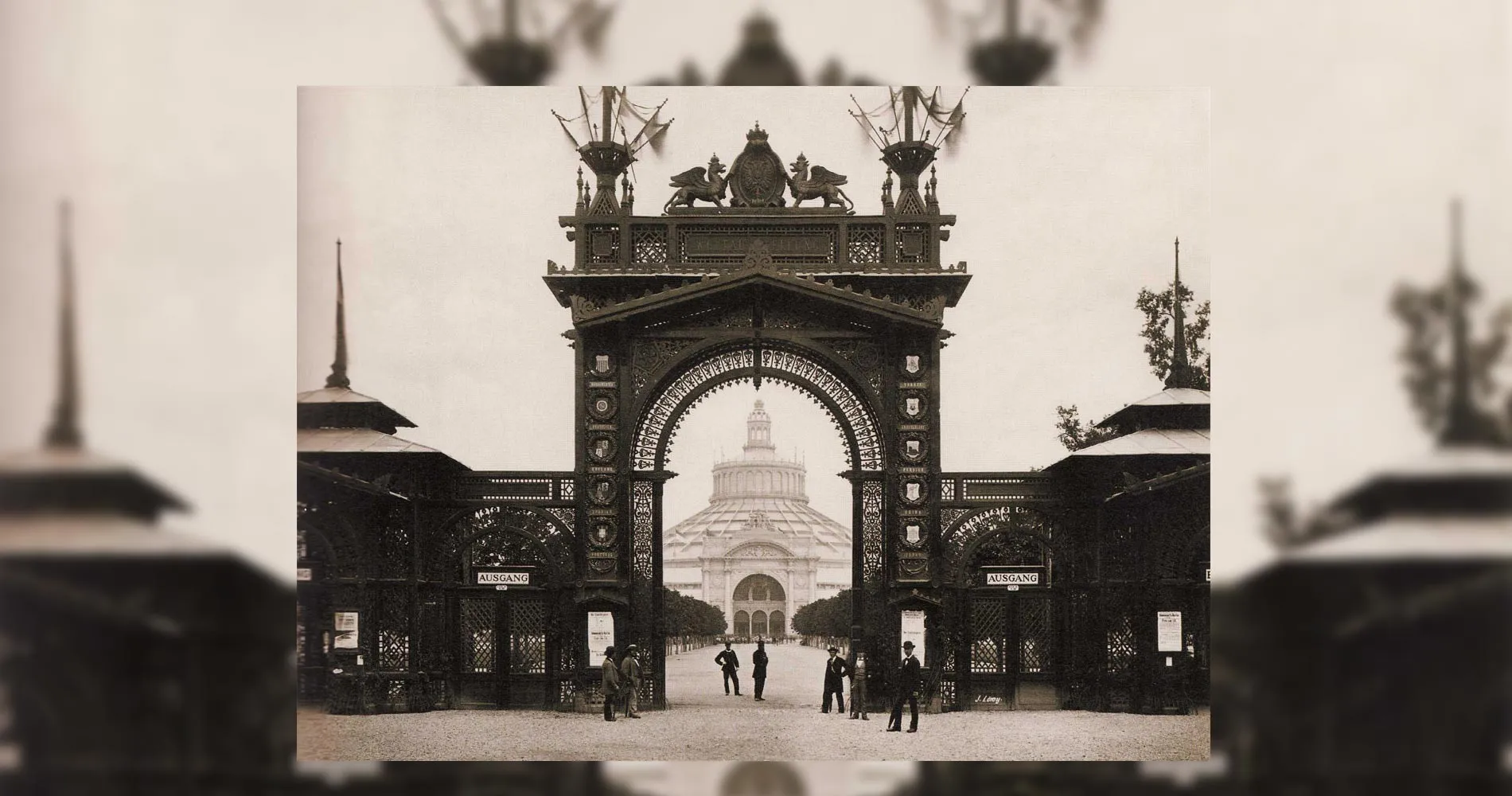One of the greatest exhibitions of all time – the Vienna World’s Fair of 1873 – is celebrating its 150th anniversary. The Vienna World’s Fair was a testament to the Austro-Hungarian Empire’s industrial progress and triggered an unprecedented boom in Vienna’s urban development. At the time Vienna was the center of art, science, architecture and medicine. With a total of 53 000 exhibitors in 194 pavilions from 35 countries the Vienna World’s Fair was unique and magnificent. It was one of the very first global events of its kind.
Yegor Shestunov
15 December 2023
Chinese version | French version | German version | Russian Version | Spanish version
The Vienna World’s Fair of 1873 took place when the Austria-Hungary Empire was a world power. Fin de siècle Vienna was characterized by the Gründerzeit, the construction of the Ringstrasse and the Vienna World’s Fair of 1873. This year marks the 150th anniversary of this monumental exhibition, the fifth international world’s fair of its kind. It took place between May and November 1873 and was a defining moment for the imperial capital of the Habsburg Empire. Emperor Francis Joseph Habsburg- Lothringen (1830-1918) was the sovereign of the Austro-Hungarian Empire during the time of the Vienna World’s Fair. Vienna was the center of the world of that time.
During Francis Joseph’s rule, Austria experienced its industrial revolution. The period now referred to as the Gründerzeit (1848-1918) was a time of great social upheaval and industrial development. The Empire experienced a great economic upswing and the population of the city of Vienna boomed to two million by 1918. The strong population growth triggered an enormous housing shortage, which in turn led to a construction boom of residential buildings, the result of which still characterizes the Viennese cityscape today.
Another defining event was the construction of the Ringstrasse (ring boulevard) which expanded the inner city of Vienna by building its monumental buildings and an encircling road where the old city wall had been. A public competition was announced which was the first international public tender in the field of architecture and urban planning.
To celebrate its new sense of modernity and importance, Vienna hosted the World ‘s Fair in 1873. Inspired by London and Paris, Vienna presented itself in 1873 with this outstanding project of the Ringstrasse and its monumental buildings, which served simultaneously as a demonstration of power, a showcase of civic achievements and a glittering celebration. The grandiose exhibition became a platform for global politics, provided the impetus for many innovations and cemented Vienna as a world-class metropolis.
The Vienna World’s Fair was to surpass all previous exhibitions. On a site five times larger than that of the previous Paris exhibition, 53 000 exhibitors from 35 countries presented themselves. Among the architectural masterpieces were the Industrial Palace with the largest dome in the world at the time and the 800-metre-long Machine Hall. A total of 194 pavilions were erected, many in extravagant architectural styles.
The exhibition aimed to showcase contemporary cultural life and economic development. It was a testament to the Empire’s industrial progress. Countries such as Japan, Morocco, Egypt, Tunisia, Persia and the Ottoman Empire presented themselves for the first time with their own pavilions. This enabled an unprecedented cultural and economic exchange on a global scale.
Despite the ambitious planning, which expected 20 million visitors, only 7.25 million came owing to a stock market crash and a cholera epidemic. Nevertheless, the exhibition remained an important event in the history of Vienna and the world.
The Vienna Police Department prepared for the World Exhibition with a series of reforms. The founding of the Vienna Security Guard in 1869 was an important step towards ensuring security at the Expo. Under the leadership of Anton Ritter von Le Monnier, a member of the World’s Fair Commission, a special police department was set up that also included foreign language skills.
The World’s Fair contributed significantly to urban development. Hotels were built, including the Hotel Austria on the Schottenring, which later served as Vienna’s police headquarters. The expansion of the railroad network, the regulation of the Danube and the construction of the 1st Vienna High Spring Water Pipeline were further important infrastructural measures marking the economic rise of the Austro-Hungarian Empire.
The exhibition had a lasting influence on culture and art. The introduction of Art Nouveau (Jugendstil), inspired by Japanese woodblock prints, was an outstanding example of cultural exchange. Vienna would go on to become a center for this new art with the creation of the Vienna Secession in 1897 where artists such as Gustav Klimt, Koloman Moser, Josef Hoffmann and Josef Engelhart were at the heart of this new global fin-de-siecle movement. The Vienna World’s Fair also led to the founding of museums and the establishment of collections that are still significant today.
A special feature was the women’s pavilion, which was dedicated to the theme of “Women in the world of work”. This tradition of a special pavilion for women was adopted by later world exhibitions and reflected a change in society’s perception of the role of women.
To commemorate this special anniversary, numerous events and special exhibitions are being in Vienna. A two-year research project was initiated to create a digital platform that brings together all the objects from the Japanese pavilion at the World’s Fair.
In a special exhibition, the MAK (Vienna’s Museum of Applied Arts) sheds light on the orientalist construct of the 19th century. This critical examination of the representation of the Orient, in particular Egypt and Japan, questions the aesthetic decision-making process and the political and cultural framework of the World’s Fair. The exhibition presents important objects from the MAK collection that are closely associated with this World’s Fair. Another exhibition highlighting the 150th anniversary is taking place at the Wiener Weltmuseum. This exhibition will end on 31 December 2023.
Vienna has again become an international city, one of the three UN headquarters. It is located again at the center of Europe if not as it once was the “center of the world”.







